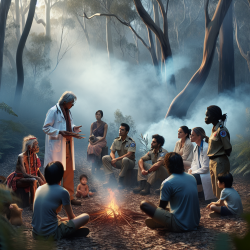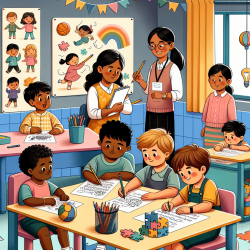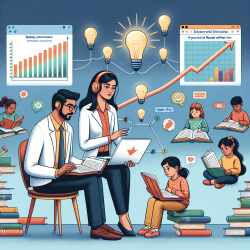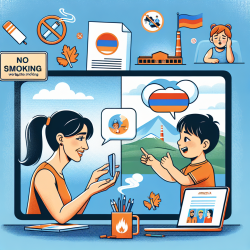Introduction
In the realm of speech-language pathology, understanding the broader context of a child's environment can significantly enhance therapeutic outcomes. A recent study titled Exploring Indigenous Ways of Coping After a Wildfire Disaster in Northern Alberta, Canada provides valuable insights into Indigenous coping mechanisms during and after a disaster. This research can guide practitioners in developing culturally sensitive approaches that support resilience and recovery in children.
Key Findings from the Research
The study highlights several key aspects of Indigenous coping strategies post-disaster:
- Community Cohesion: The research underscores the importance of strong community ties and cultural connections in fostering resilience. Indigenous communities leveraged their social networks and cultural practices to cope with the aftermath of the wildfire.
- Connection to Culture: Cultural identity and practices played a crucial role in emotional and psychological recovery. Traditional activities and ceremonies provided a sense of continuity and support.
- Intergenerational Strengths: Sharing circles revealed the therapeutic value of storytelling and intergenerational knowledge transfer, which helped individuals process their experiences and emotions.
Implications for Practitioners
For practitioners working with children, especially in Indigenous communities, integrating these insights can be transformative. Here are some practical applications:
- Incorporate Cultural Practices: Encourage the inclusion of cultural activities and traditional practices in therapy sessions. This can enhance engagement and provide a familiar framework for children to express themselves.
- Facilitate Community Involvement: Engage community members and elders in the therapeutic process. Their involvement can provide additional support and reinforce cultural identity.
- Use Storytelling as a Tool: Implement storytelling as a therapeutic tool to help children articulate their experiences and emotions. This aligns with Indigenous traditions and can be a powerful method for healing.
Encouraging Further Research
While this study provides a foundational understanding, there is a need for further research to explore the nuances of Indigenous coping strategies in different contexts. Practitioners are encouraged to engage in community-based participatory research (CBPR) to deepen their understanding and contribute to the body of knowledge in this area.
Conclusion
Understanding Indigenous ways of coping offers valuable lessons for practitioners aiming to improve outcomes for children. By integrating cultural sensitivity and community engagement into therapeutic practices, we can support the resilience and well-being of children in Indigenous communities.
To read the original research paper, please follow this link: Exploring Indigenous Ways of Coping After a Wildfire Disaster in Northern Alberta, Canada.










